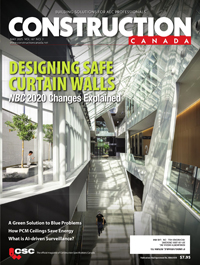Galvanneal coatings versus galvanize coatings
Formability
A galvanize coating is quite soft, and can be easily scratched. A galvanneal coating is very hard, and thus not as easily scratched when handling. The harder zinc-iron alloy powders on deformation, unlike pure zinc coatings that can gall (i.e. easily gouge) and flake.
The good frictional behaviour and ductility of zinc, combined with the excellent adhesion achieved between the coating and steel, allows galvanized sheet to be formed into many intricate shapes without any loss in coating adhesion.
Adherence
Even though the galvanneal alloying reaction results in a hard, relatively brittle coating, it can be bent, stretched, and drawn when correct sheet manufacturing and part-forming procedures are used. Many parts made from galvannealed sheet require a deep drawing operation. During this process, galvannealed sheet typically exhibits some ‘powdering’ of the coating as a result of high compressive strain that can occur during the forming operation. By proper control of the steel manufacturer’s processing practices, combined with the proper setup of the drawing dies and the use of appropriate drawing lubricants, the amount of powdering can be minimized and excellent performance can be achieved.
The powdering of a galvannealed coating during forming is a function of many parameters, mostly relating to the steel manufacturing practices previously discussed. The most important characteristic of the coating affecting the powdering tendency is the coating thickness. The amount of powdering rises directly as the thickness increases. For this reason, the maximum coating weight for galvanneal is restricted to ZF180 (180 g/m2) [A60 (0.60 oz/sf)]. For many applications, an A60 coating weight is too thick to provide acceptable powdering performance, and many users specify ZF120 (120 g/m2) [A40 (0.40 oz/sf)], or less. The tendency for A60 to powder should be considered when selecting a coating weight.
The second largest influence on the adherence of galvanneal coatings is the iron percentage in the coating. The bulk iron level must be within a range of nine to 12 per cent to perform satisfactorily in most forming operations. Iron levels of less than nine per cent result in softer coatings containing free zinc at the surface. This will change the co-efficient of friction and interfere with draw-ability and stretch-ability of the sheet. Iron levels over 12 per cent result in harder coatings creating excessive powdering to the point of fouling the forming dies. Some users of galvanneal prefer iron levels near either the upper or lower end of the above range due to the nature of their forming processes. Producers of galvanneal must understand how to control coating iron levels on their equipment to provide satisfactory product for the range of their customer base.
Generally, there are no significant differences in the properties of the steel substrate, whether it is galvanized or galvanneal. Any differences in forming behaviour (e.g. splits) are usually related to the different nature of the two metallic coatings. For example, the substantial difference in coating hardness can necessitate changes to the stamping parameters (i.e. die type, die clearances, hold-down forces, and lubrication type).
Corrosion performance
The thickness of a galvanize coating has a direct influence on the corrosion performance and life of the product (i.e. the thicker the coating, the longer its life). The corrosion performance of a galvannealed coating is more complicated than its galvanized counterpart. Almost all applications of galvannealed sheet involve painting after fabricating. The primary reason is that, when unpainted, the presence of 10 per cent iron in the coating can lead to a ‘reddish-coloured’ corrosion product when the surface becomes wet. The colour is related to corrosion of the iron within the coating and does not necessarily signify that corrosion of the steel substrate is occurring.
This discolouration is purely a cosmetic effect due to the iron in the coating.
Nevertheless, many users find this staining unacceptable, thereby requiring most applications for galvanneal be painted after fabrication. For this reason, most corrosion studies of galvanneal relate to it being painted. Since paint systems have a direct influence on product life, the corrosion performance of galvanneal is generally not compared with bare (unpainted) galvanize.
The importance of the galvanneal coating thickness is often revealed at sheared edges or scratches (i.e. places where the steel and metallic coating are directly exposed to the corroding environment). At such discontinuities, a thicker coating can improve resistance to “undercutting” the paint film (i.e. a thicker galvanneal coating can slow down degradation of the paint, as evidenced by edge ‘creep-back’ corrosion and eventual total loss of paint adhesion). To maximize service life, it is therefore advisable to use as thick a galvanneal coating as potential powdering problems allow.
Considering relative corrosion rates
A pure zinc coating (galvanize) provides a high degree of galvanic protection to exposed steel such as at sheared edges and scratches. A galvannealed coating is about 10 per cent less galvanically active in most environments because it contains 10 per cent iron. Its bare corrosion rate may, in fact, be less than pure zinc, but is masked by the reddish-coloured corrosion products that can form on the surface in the presence of water. Galvanneal will maintain its original matte grey appearance if it never gets wet.
The more galvanically active galvanize coatings could be quickly consumed when acting as a galvanic protector to any exposed steel. The less galvanically active galvanneal coatings do not offer as much galvanic protection, and therefore are not as rapidly consumed during the corrosion process. It is interesting to note that automotive galvanneal coatings equivalent to about A30 have performed just as well as approximate G50 galvanize coatings with respect to the corrosion-resistance of painted outer auto body panels.
The specific needs of the application and the corrosion performance requirements dictate which coating will perform best. The other requirements for the application, such as the weldability and the specific capabilities of each product manufacturer’s paint shop need to be considered when deciding which product is best for a given situation.
Conclusion
Galvanneal has enjoyed immense growth since first introduced over 50 years ago as a zinc-coated steel sheet product that guarantees excellent paint adherence. The synergy of the excellent bond between a galvanneal coating and paint provides a very formable and weldable sheet metal product with superior corrosion resistance.
 Gary Dallin, P.Eng., is director of the GalvInfo Center, a program of the International Zinc Association. Previously, he was employed as a metallurgist in the Canadian steel industry. Dallin has 48 years of experience with galvanized and prepainted steel sheet products, is a registered Professional Engineer in Ontario, and is active on ASTM International Committee A05 on metallic-coated steel products. Dallin can be contacted at info@galvinfo.com.
Gary Dallin, P.Eng., is director of the GalvInfo Center, a program of the International Zinc Association. Previously, he was employed as a metallurgist in the Canadian steel industry. Dallin has 48 years of experience with galvanized and prepainted steel sheet products, is a registered Professional Engineer in Ontario, and is active on ASTM International Committee A05 on metallic-coated steel products. Dallin can be contacted at info@galvinfo.com.







